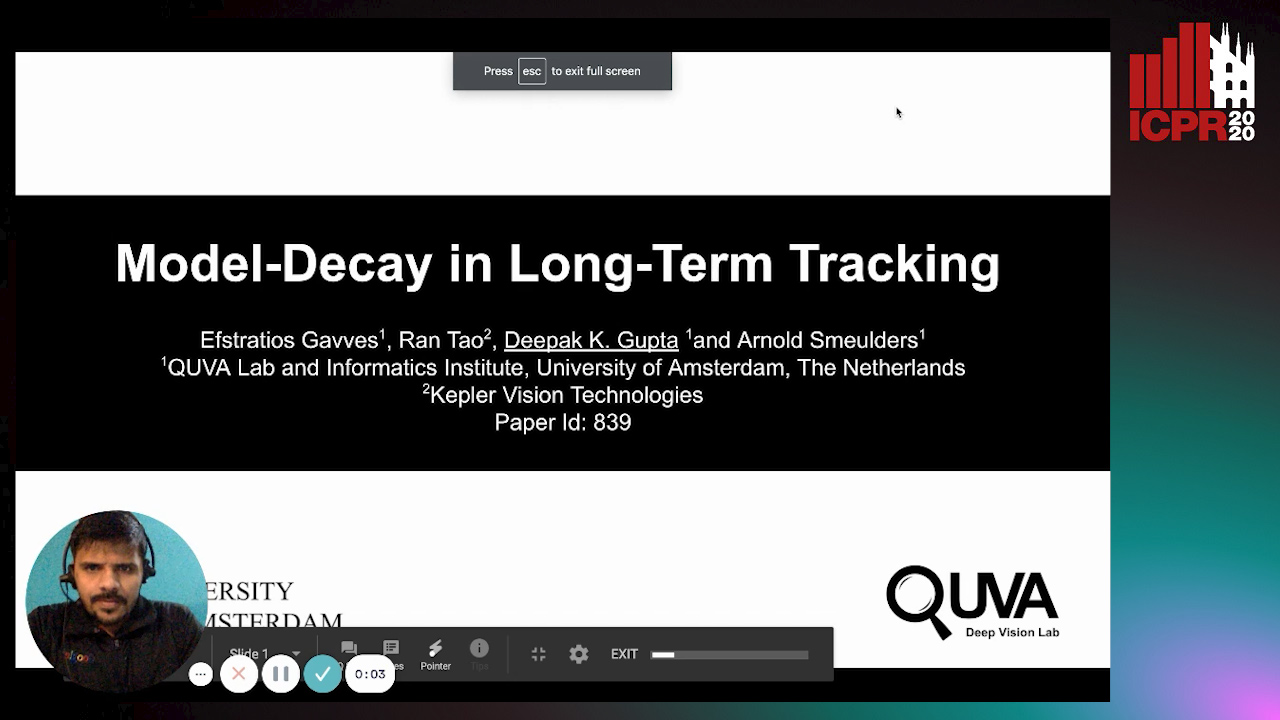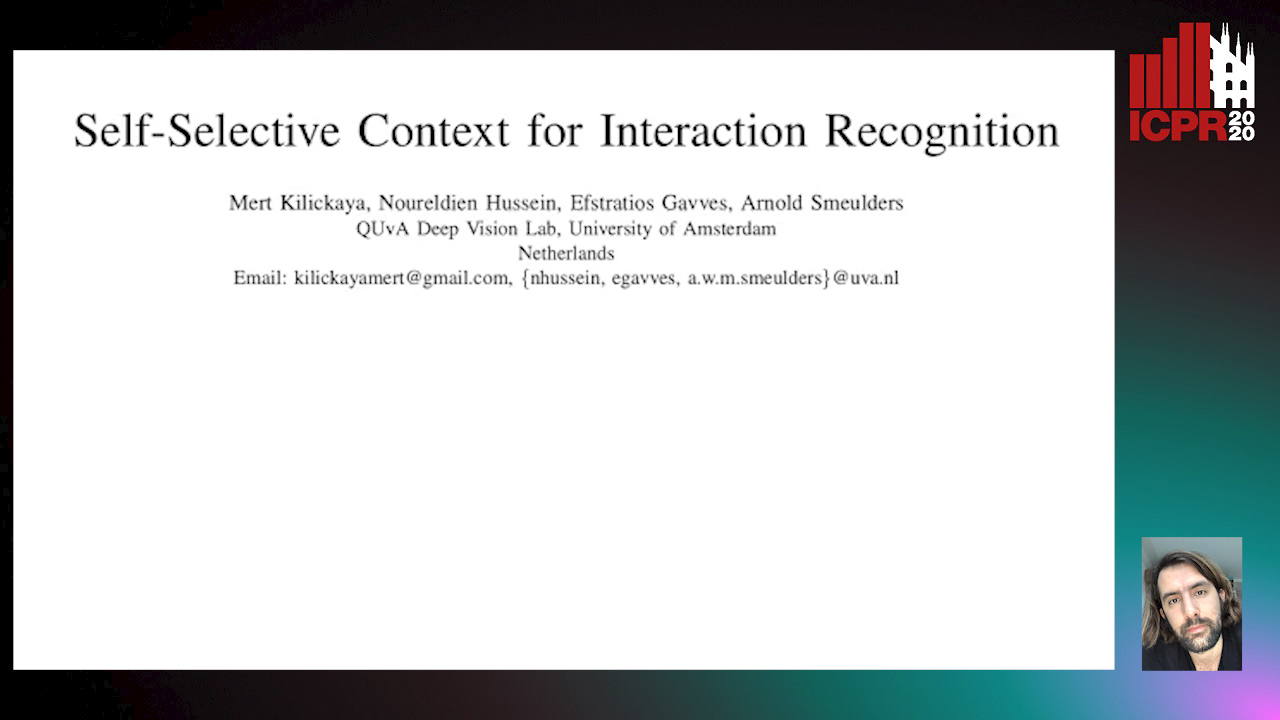Arnold Smeulders
Papers from this author
Model Decay in Long-Term Tracking
Efstratios Gavves, Ran Tao, Deepak Gupta, Arnold Smeulders

Auto-TLDR; Model Bias in Long-Term Tracking
Abstract Slides Poster Similar
Self-Selective Context for Interaction Recognition
Kilickaya Kilickaya, Noureldien Hussein, Efstratios Gavves, Arnold Smeulders

Auto-TLDR; Self-Selective Context for Human-Object Interaction Recognition
Abstract Slides Poster Similar
Tackling Occlusion in Siamese Tracking with Structured Dropouts
Deepak Gupta, Efstratios Gavves, Arnold Smeulders

Auto-TLDR; Structured Dropout for Occlusion in latent space
Abstract Slides Poster Similar